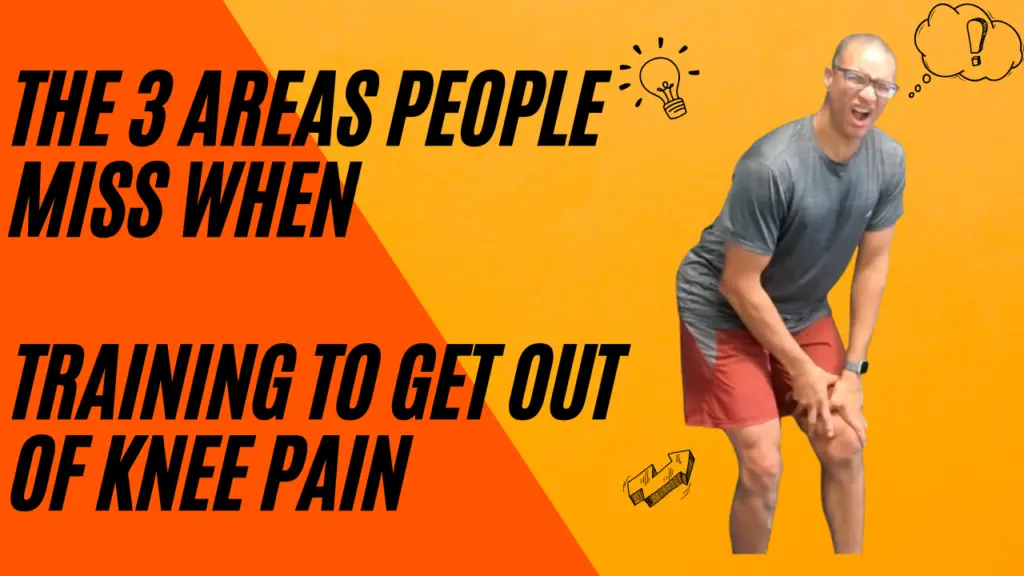
Is knee pain after running slowing you down—or keeping you from your favorite workouts altogether? Are you frustrated because you’re diligently doing the preventive and corrective exercises you think you “should,” yet the pain keeps returning?
You’re not alone, and you’re not wrong in your effort. You’re just likely missing three specific, essential areas every runner must address to stay truly pain-free your Patellofemoral Joint, Vastus Medialis Oblique (VMO), and Articular Genu.
Why Does Knee Pain After Running Happen?
Knee pain during or after running is incredibly common, and often strikes when you least expect it. Maybe you’re feeling great on one run then, out of nowhere, that familiar ache or sharp pain flares up. Most knee pain from running is due to overuse and improper distribution of force not necessarily a traumatic injury. Common causes include weak muscles, alignment issues, worn-down cartilage (patellofemoral syndrome/chondromalacia), or tight fascia and tendons.
The reality is: Running is a dynamic, full-body movement. Every stride sends tons (literally!) of force through your legs, up your hips and spine, and across your entire kinetic chain. If your muscles, ligaments, and critically your fascia and joint structures aren’t working optimally, that force gets lost or stuck at the knee, causing pain and, eventually, injury.
The Common Mistakes
Standard “solutions” typically target the symptoms instead of the source: ice, pain meds, generic foam rolling, or a few basic stretches. While these may help a little short-term, they don’t address the deeper mechanical misalignments or the most important stabilization muscles and connective tissues.
The 3 Areas Every Runner Needs to Address
1. Patellofemoral Joint
This is the joint between your kneecap (patella) and your femur. It’s responsible for smooth, efficient motion every time you bend or straighten your knee. When it gets “asleep” (i.e., isn’t actively engaged or well-lubricated), pain and tracking issues become inevitable. Training the Patellofemoral Joint through specific balance and mobility exercises “wakes it up,” helping it communicate with your brain and spinal cord so each stride aligns and functions correctly.
2. Vastus Medialis Oblique (VMO)
The VMO is a part of the quadriceps that attaches to the kneecap and is largely responsible for holding the patella in the right position as you move. Most traditional leg workouts and stretches miss the unique activation needed for the VMO. For running, this small, oblique section is critical—its proper firing pattern keeps your kneecap tracking smoothly and prevents it from drifting to the outside, which is a root cause of runner’s knee. Think: targeted, soccer-kick style resistance or functional movements—not just generic quad extensions.
3. Articular Genu
This lesser-known but vital structure sits deep in the thigh and attaches to the synovial membrane beneath the kneecap. Its role is to generate fluid movement under the kneecap (critical for nutrition, waste removal, and shock absorption). Standard knee routines will never touch the articular genu. Specific exercises are needed to activate this area—typically by fixing the kneecap and using isolated, precise tension to target only the articular genu fibers. When this muscle is strong and flexible, your knees recover and function properly after every run.
The Power of a Specific, Holistic Approach
Fixing knee pain after running isn’t about one stretch or trendy treatment. It’s about a targeted, holistic program that addresses not only the muscles and joints, but the connective tissue and the hidden stabilizers and fluid channels.
If you’re stuck in the pain–rest–relapse loop, or you’re always trying a mix of magazine or YouTube workouts, you’re missing the specific, lasting solution your body needs to thrive as a runner and stay active as you age.
Here’s Your Action Plan:
- Warm Up the Right Areas: Before you run, activate the ankles, knees, hips, and spine. Use dynamic movements and gently increase internal body temp and mobility.
- Stretch and Normalize Afterwards: After running, use myofascial and specific chain stretches to address shins, calves, hamstrings, deep hip rotators, glutes, and trunk—all crucial for knee function.
- Target the 3 Key Areas: Add corrective, focused exercises for your Patellofemoral Joint, VMO, and Articular Genu. If you’re not sure how, don’t guess—this is where specialized coaching makes all the difference.
Real Results Happen With the Right Focus
Remember, pain doesn’t disappear from generic advice or random routines. One client—a dedicated runner plagued for years by “patellofemoral syndrome”—saw her pain vanish completely within three months of following a true corrective routine. Best of all, her overall mobility and confidence soared, proving that targeted training builds more than just pain relief: it’s the foundation for lifelong activity and enjoyment.
Don’t Let Knee Pain Be Your Weakest Link
You are only as strong and mobile as your weakest area. Instead of letting knee pain sideline your progress, address the real drivers. Your daily routine should empower you to not just manage but transform your running experience.
If you’re ready to stop cycling through ineffective fixes and finally address the root of your knee pain, the next step is simple:
[Book a free consult] to get access to individualized evaluation and a proven, practical path forward so you can return to running, exercise, and the activities you love with lasting comfort and strength.
it’s not just working out, it’s building a foundation for a better life.
Find out more @

Leave a Reply